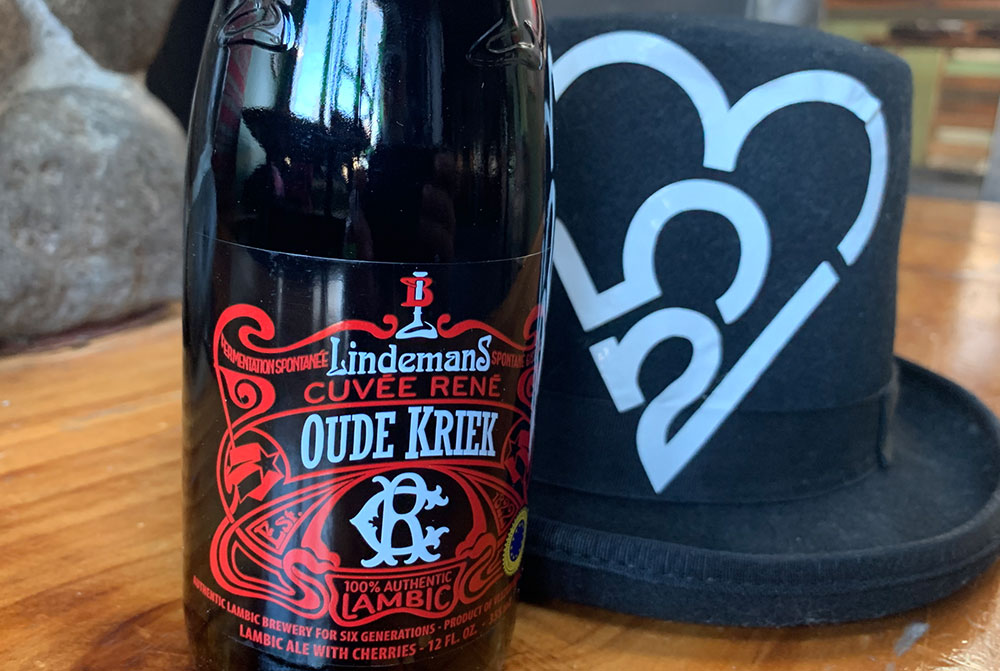
Fancy Pants Sunday: Lindemans Oude Kriek Cuvée
Probably more than any other country, Belgium holds particular prominence to folks around the world who enjoy beer. This young (1830) small (11 million people) country has centuries of brewing traditions built into its history. For our Fancy Pants Sunday column — a weekly look at beers that rule with complexity, creativity and/or giant bottles — we tap into Belgium’s brewing history featuring a Lindemans Cuvée in what we’re calling Fancy Pants Sunday: Lindemans Oude Kriek Cuvée.
In 1822 Joos Frans Lindemans married a desirable farmer’s daughter called Françoise Josine Vandersmissen and built a farm called, Hof ter Wegen, southwest of Brussels. There was farming blood in Joos Frans’ veins, but his sights were set somewhat higher. He was soon mayor of the small town of Vlezenbeek and in the evening, after ploughing his lands, Joos Frans took to brewing lambic (lambiek) beer. During the winter months work would come to a standstill on his 75 hectares of farmland and meadows, and the farm hands, male and female, would be employed in the brewery. What started off as a side activity gradually developed into the main business. Several generations later, by the 1950s, brewing was the sole activity at Hof ter Kwade Wegen.
Lambics come only from the Senne River valley, south and west of Brussels in the Pajottenland region — a region about 15 by 75 miles in size. Officially speaking, lambic is an appellation — like “Champagne” and “bourbon” — and the use of the l-word is strictly enforced and reserved for beers made exclusively in said region. Most important of all, they’re beers that are spontaneously fermented by the airborne wild yeasts and bacteria present in this valley and nowhere else on the face of the Earth. Nature didn’t just bless this area with the right yeasts and bacteria — it also endowed it with an ideal climate for slow fermentation, easy access to French wine barrels, and even tart Schaerbeek cherries. The real beauty of these ales is how different they are from brewery to brewery, batch to batch, barrel to barrel. Hell, the beer even changes with each sip down the glass.
Lindemans belongs to the very select group of lambic breweries that up to this day are brewing authentic lambic beers in the Senne Valley. Merchant du Vin introduced Lindemans lambics to the United States in 1979, making them the first lambics marketed in US history. To this day, they are the best-selling brand in the category.
The production of Lindemans Oude Kriek Cuvée René does not require any blending. The brewer adds whole krieken cherries to a lambic that has aged for at least six months old in oak foeders. These krieken cherries will then ferment in the barrel for at least another six months until they produce a lovely kriekenlambiek. This lambic is then transferred into 75cl bottles where it will continue to ferment. The fermentation in the bottle produces carbon dioxide, which accounts for the delicate bubbles and almost translucent collar of froth. Lindemans Oude Kriek Cuvée René takes on a ruby-red color in the glass covered by a pinkish-red cloud of froth. This kriek is a thirst quencher par excellence. Its slightly sour and sparkling taste turns it into an ideal aperitif.
You fancy, Lindemans Oude Kriek Cuvée!
LINK: Peaks & Pints beer and cider cooler inventory
